Wheelwright
Wheelwrights Cottage was built in early 17th century, in Wheelers Lane, the lane alongside known variously as Swan's Alley, Sutcliff's Alley, Home Lane and Blind Lane.
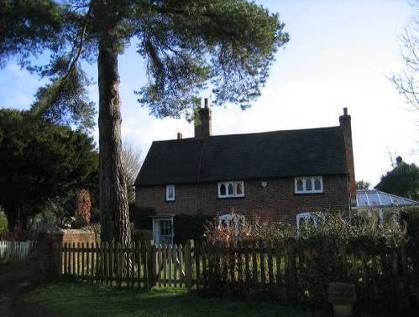
- Wheelwrights Cottage today
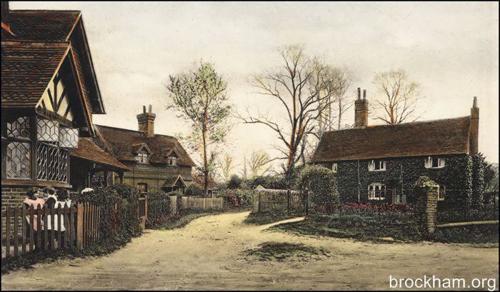
Records show:
1841 census and 1843 Tithe Award *: The owner was William Skelton aged 80 and family living there. The Tithe Award has Skelton still there and Skelton's workshops on the site where Way House now stands. Skelton was a wheelwright/carpenter and the house and garden was described as a beauty spot with its Yew Tree House.
In 1843 Tithe Award owned by Edward Noy and live in by Wm Skelton next door on the site of Way House is Skelton's workshops (Noy was to own Noys Farm which became Tumbledown Farm)
1844: William Skelton a wheelwright and James Skelton a victualler bought the house from Charles Hart of Dorking.
1851 Census: Thought to be Thomas Sherlock. There was a house and a shop on the site when owned by Thomas Sherlock until about 1859/1860 when the wheelwrights shop was pulled down and Sherlock moved to Middle Street. Sherlock opened a shop on The Green where Century Cottage now stands.
J W Humphrey written in about 1860: 'I remember there was a Wheelwrights shop just beyond where the Home stands, it was facing the old house looking towards the Green, with its pretty garden and large yew tree summer house, which I have always looked upon as one of the beauty spots of Brockham. The Wheelwrights shop was cleared away before the 'Home' was built and the wright - Mr Thomas Sherlock, moved to the house just beyond the pond in Middle Street on the left looking south. He also build the Blacksmiths shop and turned an old barn into a workshop and was a very busy man.'
Sherlock moved from Wheelers Lane to Whytways and built the blacksmith's shop using the barn as a workshop. The fireback is marked 'Thomas Sherlock, Brockham 1843 A Holmes Dorking'.
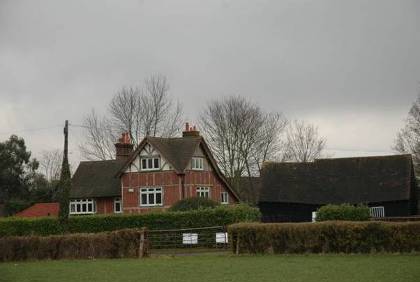
- Whytways
1861 census: Thomas Sherlock aged 46 born in Capel a master wheelwright and smith employing two men and two boys. His wife was Joyce age 42 from Leatherhead and amongst those in the house were Thomas Sherlock age 18, assistant wheelwright born in Leigh, George Sherlock age 17, assistant wheelwright born in Leigh, Harry Alderton age 41 from Petworth a wheelwright/journeyman with William Dudley aged 16 from Mickleham an apprentice.
Alice Sherlock wrote on the back of two photos of the house:
'Thomas Henry Sherlock bought these premises about 1845 and took the wheelwright business there from the back of Brockham House to the Smithers as this place as always known by. He had two sons (Uncle Tom and Dad) after they were old enough and had learnt their trade (Uncle as Blacksmith and Dad as Wheelwright). Grandad took premises at Dorking for Uncle Tom and Dad had the Smithers as it was then called. Both got married and Uncle lived at Dorking and Dad at Brockham.. We were born and remained at the Smithers until Dad's health failed him when George was about 3 or 4 years of age and Doctor said dad must retire out of the business. Which, after a lot of persuasion form Mum he did so. We all loved the old house and were very upset upon leaving it.'
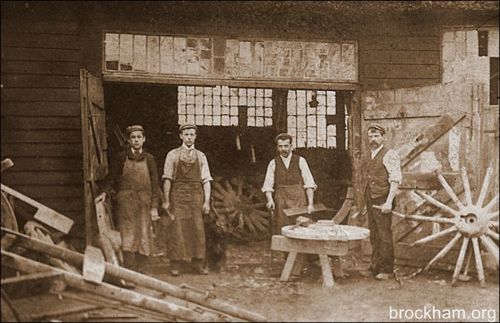
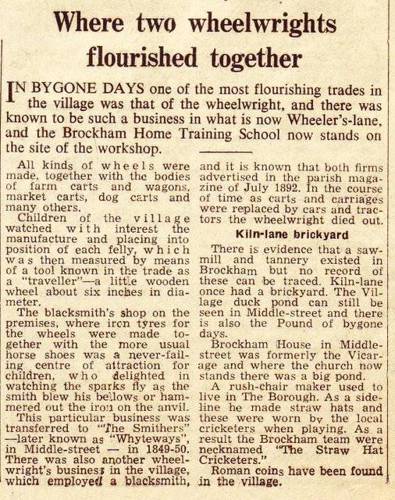
* Tithe maps and apportionments were produced as a result of the Tithe Communication Act 1836. The aim of the Act was to convert traditional tithe payments, which were paid 'in kind' and based on 1/10 of produce, into rent payments which were meant to be based on the revailing price of grain. Tithes were divided into 'great' tithes: corn, grain, hay and wool; 'small' tithes : all other produce. Usually 'great'tithes were paid to the rector and 'small titles to the vicar.

